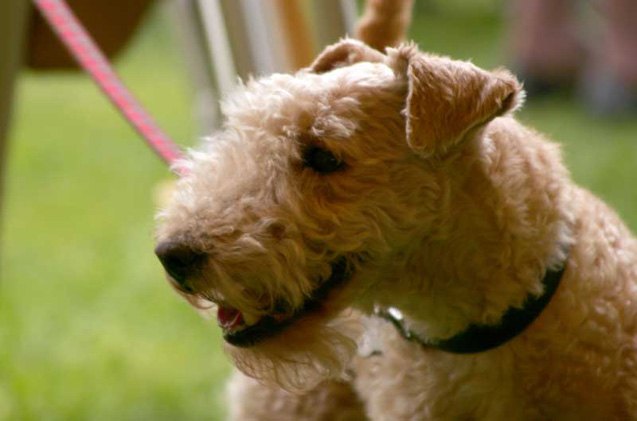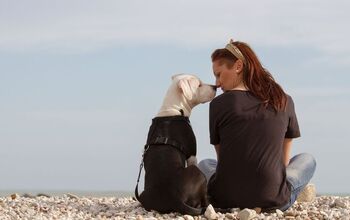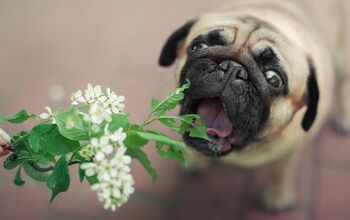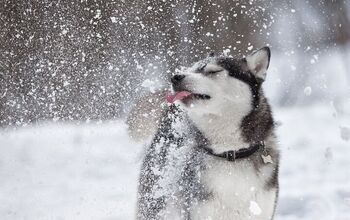Lakeland Terrier


About Lakeland Terrier
Lakeland Terriers, also known as “Lakies,” are lively, feisty little dogs that are affectionate, friendly, and confident. One of the oldest working terrier breeds around, the Lakeland Terrier has made its way from the fields to the home with ease, charming its way into the hearts of enthusiasts around the world.
Bold and friendly, the Lakeland Terrier fits well into a variety of living situations, whether you’re in the country or in the city. Perfect for those with an active lifestyle, the Lakie will keep you on your toes while proving himself as a loving companion. Read on to learn more about this wonderful breed.
Lakeland Terriers, also known as “Lakies,” are lively, feisty little dogs that are affectionate, friendly, and confident.
Bred and raised in Northern England in the 1800s, the Lakeland Terrier gets his name from the rugged and mountainous Lake District. This practical working dog’s job was to hunt and kill foxes, badgers, otters and other vermin that plagued farm, especially during the lambing season. With his small, narrow body, he was able to squeeze into rocky dens. This dog was so tenacious, he would often go deep underground and stay there for days – that’s how determined he was to kill his prey!
Because this breed was valued by hunters and farmers, they were often given as gifts to friends and other hunters. Now he is family dog, a reliable guard and watch dog and show dog.
Because the Lakeland Terrier is an older breed, it’s hard to pinpoint its exact ancestors. However, it is believed that it is a relative to the Border Terrier, as well as the Bedlington Terrier. The Lakie is most likely the result of crossing several different terriers, which could include the Bedlington Terrier, the Welsh Terrier, the Dandie Dinmont and the Wire-Haired Fox Terrier.
Like most breeds, the Lakeland Terrier does well on a diet of high-quality kibble, about one cup a day that’s divided into two meals. Lakeland Terriers can be possessive of their food, but obedience training will help curb this habit.
Thanks to his independent streak, the Lakeland Terrier can be a challenge to train.
Thanks to his independent streak, the Lakeland Terrier can be a challenge to train. You’ll need to be patient, as well as firm and consistent, to ensure training goes well. Use positive reinforcement techniques such as food rewards, praise, and play to get the most out of your lessons. As well, lessons should be short and entertaining so that your Lakie doesn’t lose interest. Always be consistent with training and discipline (but never harsh) in order to establish your role as the leader of the household.
After basic training has been mastered, your Lakeland Terrier will flourish with advanced training and agility activities. This will help keep his mind and body alert and active.
You may find that housetraining can be trying. Again, this is when patience and consistency are needed. Stick to a bathroom schedule and make sure a job well done is rewarded with praise and treats. You’ll want to crate train your Lakie to help curb indoor accidents.
The Lakeland Terrier’s weight ranges from 15 to 17 pounds, making it a small dog.
This is a typical terrier, so expect your dog to be fearless and bold, as well as independent. Curious about everything around him, you’ll find the Lakeland Terrier to be intelligent and entertaining. This breed loves the outdoors and lives for an endless game of catch. And this love of fun lasts well into adulthood. The Lakie does well in families with older children, and can sometimes be wary of strangers if not socialized properly.
Often possessive of toys and food, children should be taught proper etiquette around this breed. If boundaries are crossed, a snapping accident can occur.
When taking your Lakeland Terrier for a walk, always keep him on a leash. Never leave your Lakie unattended in a fenced-in area – this breed is known to dig and tunnel their way out in search of greener grass and squirrels to catch.
The Lakeland Terrier is relatively free of health issues. The only health concerns that could arise are eye problems and Legg-Calve-Perthes disease.
The Lakeland Terrier has an average lifespan of 12 to 16 years.
A great dog for an active family, the Lakeland Terriers has energy to spare. Don’t let their size fool you – even though he’s small, he won’t thrive in an apartment. Your Lakie will need to be outdoors as much as possible – and always attended. A yard must be large enough for him to run around in. Mix up your activities to keep your dog entertained. You can take him for walks, jogs, hikes, games of catch and trips to the dog park. Lakies do well with agility and Earthdog training, which gives them plenty of mental and physical stimulation. Remember, a bored Lakie becomes a destructive Lakie.
This is a typical terrier, so expect your dog to be fearless and bold, as well as independent.
The American Kennel Association says this about the breed: “The Lakeland Terrier has a dense, wiry coat with longer hair on the legs and muzzle, often giving him a distinct beard. Small, sturdy and workmanlike, the breed’s narrow frame allows him to squeeze into rocky dens to chase after vermin. While generally a show dog or family companion today, Lakelands can also be found utilizing their natural instincts at Earthdog events or digging in the backyard.” The AKC first recognized this breed in 1934.
Lakeland Terriers sport a double coat that features of a soft undercoat, and a thick, hard topcoat. To keep it looking its best, you must strip it several times a year. Hair on the head, ears, chest, shoulders and behind tail is short and smooth, while the hair on the body is an inch long and wavy. You should keep the facial hair trimmed, but keep the hair over the eyes longer to create the rectangular look of the head.
Lakies’ coats come in an array of colors. These include blue, black, liver (a deep reddish-brown), red, and wheaten (pale yellow or fawn). Color combinations on the saddle can include blue and tan, black and tan, or liver and tan, as well as what is called red grizzle or grizzle and tan. Grizzle is a mixture of black or red hairs with white hairs.
If you keep your Lakeland Terrier stripped, you’ll find that your dog won’t shed as much. As well, you should spend 15 to 30 minutes a week brushing your Lakie.
The Lakeland Terrier can be wary of strangers and other animals. This is why it’s a good idea to socialize your puppy at every opportunity. Enroll your Lakie in Puppy Kindergarten classes and be sure to bring him to as many new places as possible while he is still young.
Photo credit: Lennart.larsen/Wikimedia; Srinayan Puppala/Flickr; agross96/Flickr

Amy Tokic, Editor of PetGuide.com, is a passionate animal lover and proud pet parent of Oscar, a Shih Tzu/Chihuahua cross, and Zed, a Japanese Chin. Her love of animals began in kindergarten, when she brought her stuffed dog Snoopy into class with her every day. Now, she writes about her adventures in pet ownership and tirelessly researches products, news and health related issues she can share with other animal enthusiasts. In her free time, Amy loves perusing used book and record stores, obsessing over the latest pet products available and chasing squirrels with wild abandon (a habit attributed to spending too much time with her pooches).
More by Amy Tokic

























